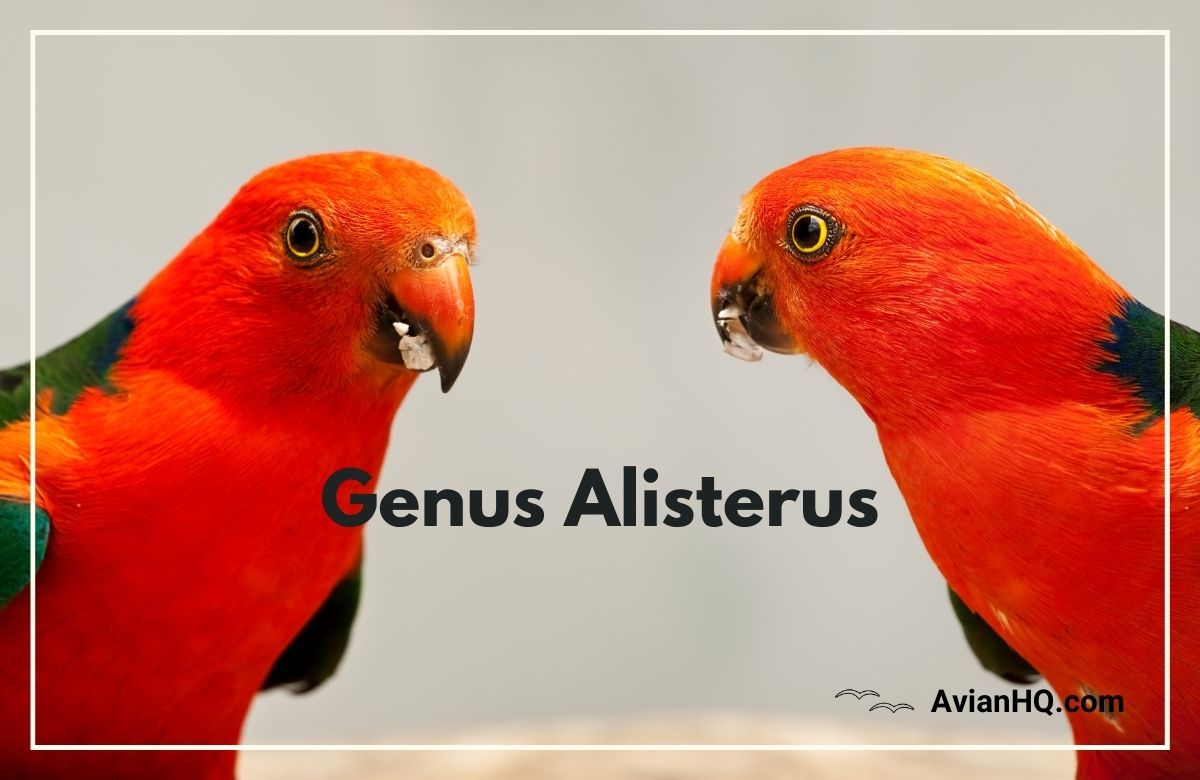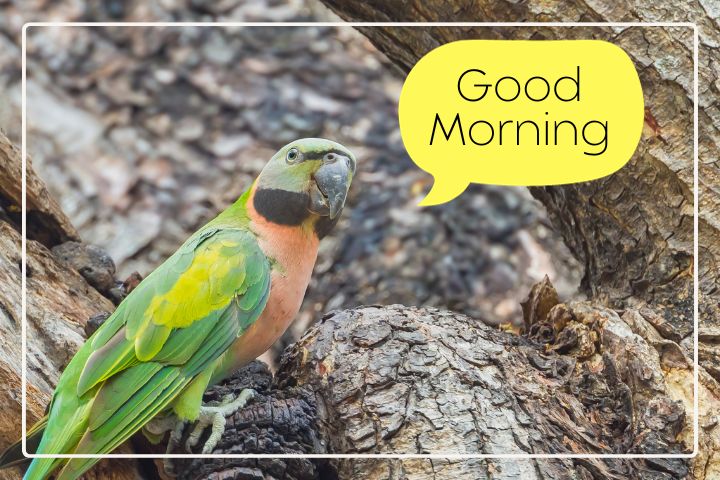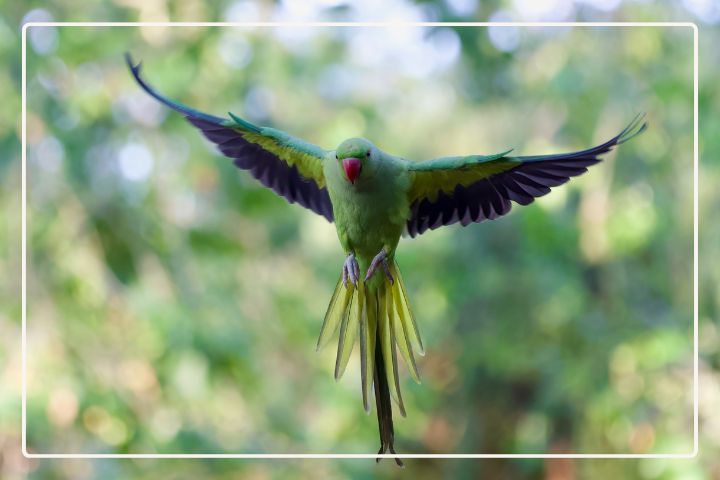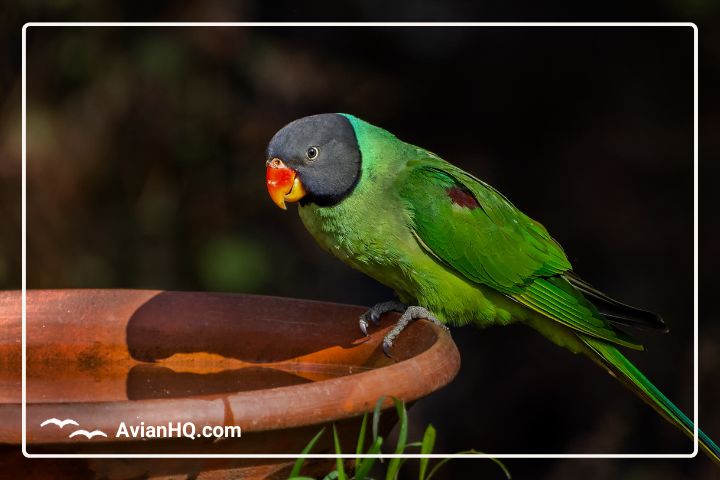Genus: Alisterus
Parrots are known for their bright plumage, curved beaks, and ability to mimic human speech. There are over 350 species of parrots divided into numerous genera. One of the most regal and recognizable is the genus Alisterus, commonly known as the king parrots.
The king parrots belong to the scientific family Psittaculidae, along with lorikeets, hanging parrots, and many others. There are only 3 recognized species in Alisterus:
- Australian King Parrot (Alisterus scapularis)
- Moluccan King Parrot (Alisterus amboinensis)
- Papuan King Parrot (Alisterus chloropterus)
These birds inhabit a wide range spanning Australia, New Guinea, and Indonesia. Their most distinctive features are the bright red, green, and blue plumage, especially on the head and wings. They also have unusually long tails compared to other parrots.
“Few sights are more striking than a male Australian king parrot in flight, with his bright red head and deep green wings.”
In this blog post, we’ll take a closer look at each species in the Alisterus genus. You’ll learn about their appearance, behaviors, cultural significance, and conservation status. Appreciating the diversity and beauty of these kingly parrots is the first step to supporting efforts to protect them.
Species Spotlights
The Alisterus genus contains three unique king parrot species, each with their own distinguishing features and native range.
Australian King Parrot
The Australian King Parrot (Alisterus scapularis) inhabits the eastern region of Australia. Males have vivid red heads and necks, contrasting with green wings and a blue back. Females differ with mostly green plumage accented with red on the abdomen. These birds reach 16-17 inches (40-43 cm) in length. The two subspecies vary slightly in size, with the northern being smaller. Australian king parrots are highly adaptable and sometimes form large flocks around food sources.
Moluccan King Parrot
Native to islands in Indonesia, the Moluccan King Parrot (Alisterus amboinensis) exhibits little sexual dimorphism. Both males and females display red heads and green wings, with no scapular band. Six subspecies exist, distinguished by wing color and subtle variations in plumage. These parrots measure 14 inches (35-36 cm) long. They live in forests and mango groves, often gathering in small groups.
Papuan King Parrot
Inhabiting New Guinea, the Papuan King Parrot (Alisterus chloropterus) shows more pronounced dimorphism. Males have red heads while females have green heads, except for one subspecies where both sexes are red-headed. The three subspecies differ based on extent of green plumage. Females exhibit the greatest variations. Papuan king parrots are 14 inches (36-38 cm) in length.
Behavior and Intelligence
The king parrots display some interesting behaviors and intellectual capacities.
Diet and Feeding
These birds are generalist feeders, consuming a variety of seeds, fruits, berries, buds, and some insects. Their strong curved beaks allow them to crack hard nuts and seeds.
Favorite foods include:
- Figs
- Berries
- Tree blossoms
- Seeds of eucalyptus, acacia, and native grasses
They may flock in groups up to 30 individuals around plentiful food sources.
Breeding and Nesting
King parrots nest in tree cavities, with entrances up to 30 feet (9 m) high. However, the actual nest chamber is often nearly at ground level, around 3 feet (1 m) deep. The birds lay clutches of 3-6 eggs between October and December. The female incubates the eggs for about 21 days before they hatch.
Intelligence and Trainability
In captivity, king parrots demonstrate good talking ability and can be trained to perform tricks. Their intelligence allows them to navigate complex environments in the wild. They are considered one of the more adept Australian parrot species, though not at the level of cockatoos.
Social Behavior
These parrots may be seen singly, in pairs, or in small groups. Large flocks congregate at plentiful food sources. They form strong pair bonds and exhibit affectionate behaviors like mutual preening.
Cultural Significance
The king parrots have long held cultural significance among indigenous peoples of Australia and New Guinea. Their bright red, green, and blue plumage features prominently in folklore, art, and ceremonies. According to Australian Aboriginal mythology, the king parrot escaped a great flood by flying into the heavens and becoming the stars. They are seen as representing spiritual concepts like guidance and wisdom.
King parrots appear in traditional stories, songs, cave drawings, and bark paintings. Their feathers have been used to adorn ceremonial garments and headdresses. The birds have also been carved into totem poles and other decorative items.
Beyond their place in indigenous culture, king parrots are highly popular as pets and aviary birds around the world due to their beauty, intellect, and talking ability. However, their long lifespan of 10-20 years and need for lots of stimulation and a varied diet mean they are demanding pets requiring a strong commitment. Captive breeding programs help provide king parrots for the pet trade while reducing pressure on wild populations. Zoos have also contributed to public appreciation of these regal parrots.
While king parrots can make engaging pets for the properly prepared owner, they have a vital connection to the heritage of indigenous peoples that should not be forgotten.
Threats and Conservation
While not considered globally threatened, the king parrot species face some concerning declines from habitat loss and capture for the pet trade.
Habitat Loss
- Logging and land clearing reduces availability of large nesting trees
- Fragmentation isolates populations and increases vulnerability to predators
- King parrots rely on intact forests with a mix of food sources
Vulnerability to Predators
- Nestlings and eggs prone to snakes, quolls, rats, and birds of prey
- Adults occasionally taken by hawk and owl species
Pet Trade Capture
- Over-collection for the pet and aviary markets can pose a local threat
- Tighter regulation has reduced unsustainable trapping
Conservation Status
- Australian king parrot: Vulnerable
- Moluccan king parrot: Near Threatened
- Papuan king parrot: Near Threatened
Conservation Actions
- Monitoring and protection of remaining old growth forests
- Nest-site augmentation by installing artificial nest boxes
- Ongoing captive breeding to supply pet trade demand
- Community education programs in New Guinea
Targeted conservation efforts can help ensure the king parrots maintain thriving wild populations. Habitat protection is key, along with efforts to curb unsustainable trapping levels.
Conclusion
The king parrots of the genus Alisterus remain some of the most vibrant and regal parrot species in the world. Their bright plumage and long graceful tails make them a favorite among bird enthusiasts. We explored the three species – the Australian, Moluccan, and Papuan king parrots – and their distinguishing features, behaviors, cultural roles, and conservation needs.
While not currently threatened as a whole genus, some localized populations of these parrots are declining due to habitat loss and trapping. Ensuring strong legal protections for their forest home ranges and regulating their capture for the pet trade will be key conservation priorities going forward. Captive breeding can supplement populations of king parrots available for aviculture.
These magnificent birds have earned their title as royalty among the parrots. Their beauty and charisma will hopefully continue inspiring artwork, stories, and conservation efforts for generations to come. Appreciating and protecting these colorful crowned jewels of Australia, New Guinea, and Indonesia is a duty we should not neglect.







